
- Jul 2, 2022

Classical Chinese Novels 101: Journey to the West
For centuries, the literati of China wrote in Literary Chinese, crafted rigidly-structured essays, delighted in allusive poetry—and looked down on fiction as a lesser form of writing. Despite this, the stories and characters of China’s traditional novels have long influenced popular culture, and they are still readily apparent in both modern Chinese and East Asian culture.
This 101 series will serve as a basic introduction to China’s Four Great Classical Novels, as well as the entertainingly divergent (and often banned) Ming classic, Plum in the Golden Vase . In addition to discussing the development of Chinese long-form vernacular fiction, these articles will seek to present different critical interpretations of each novel, as well as highlight the insights that they offer into Chinese culture. As this series is designed for those without knowledge of Chinese or just beginning their studies of the language, Chinese names will be given in English, Chinese pinyin, and characters for the first appearance, and all subsequent references will use the English.
Classical Chinese Novels 101 is divided into six chapters:
1. Classical Chinese Novels 101: Introduction to the Traditional Chinese Novel
2. Classical Chinese Novels 101: The Romance of the Three Kingdoms
3. Classical Chinese Novels 101: Water Margin
4. Classical Chinese Novels 101: Journey to the West
5. Classical Chinese Novels 101: The Plum in the Golden Vase
6. Classical Chinese Novels 101: Dream of the Red Chamber
Journey to the West , or Xiyouji (西游记), is a late Ming dynasty (1368-1644) novel of comedic fantasy based on the religious pilgrimage of a 7th-century Chinese Buddhist monk to India in search of religious scripts. Published in the late 16th century, with the earliest extant edition dating back to 1592, Journey to the West is a hundred-chapter novel attributed to the author Wu Cheng’an.
As with Water Margin and Romance of the Three Kingdoms , the authorship of Journey to the West is still disputed (Hsia, 1968; Lee, 2010; Yu, 2008). Also like the earlier two novels, Journey to the West appears to be the lengthy culmination of a long history of narrative development. Based on the historical travels of Xuanzang, a monk who travelled to India in the early 7th century and brought back 657 Buddhist texts, the eventual folk legends that developed out of this historical pilgrimage gained ever-more fantastical elements through centuries of storytelling, from Song dynasty (960-1279) oral stories to Yuan (1271-1368) and Ming dynasty dramas (Hsia, 1968; Lee, 2010).

Though similar in development to Romance of the Three Kingdoms and Water Margin , Journey to the West represents an evolution in the traditional Chinese novel. While the ultimate identity of its author is still disputed, the novel itself is widely seen as the product of one primary author rather than a product of the type of composite authorship usually mentioned in relation to the earlier traditional novels. As the well-regarded Chinese literature professor Y. W. Ma writes, “There should not be much doubt that a single author is responsible for the extant one-hundred chapter version of the novel” (Ma, 1986:43). Indeed, Ma considers Journey to the West as one of the two novels that represent the height of Ming dynasty fiction (the second being Plum in the Golden Vase ) (Ma, 1986).
The basic structure and narrative of Journey to the West are, at first appearance, relatively simple and episodic. It begins with the tale of Sun Wukong, a monkey born from a stone who gains consciousness and then attempts to seek immortality and power. Sun Wukong, also called Monkey, rebels against Heaven and has a confrontation with the Buddha, who defeats Monkey and traps him beneath a mountain. Later, Tang Sanzang, courtesy name Tripitaka, is sent by the Tang Emperor on a mission west to find sacred Buddhist texts. Along his way, Tripitaka recruits companions who serve as his protectors and disciples; his first follower is the freed Monkey, who is bound to obey him by the Bodhisattva Guanyin (Guanyin, also a Chinese goddess of mercy, is an enlightened patron to the travellers; she appears recurringly to save them, and sometimes to test them.). His other companions are Zhu Bajie, or Pigsy in the acclaimed Arthur Waley abridged translation (1942), and Sha Wujing, or Sandy. Together, the pilgrimage members encounter and overcome (sometimes with the help of Guanyin) eighty-one trials involving demon-fighting and resisting temptation before reaching the end of their journey.

Despite its simple structure, the novel stands out among the traditional novels for its vivacious comedy and sense of fun. The 20th-century scholar and Chinese ambassador to the United States, Hu Shih, specifically emphasized the novel as a book of good humor and entertainment (Lee, 2010). Though Hu Shih was arguing for an appreciation of Journey to the West separate from its history of scrutiny and philosophical analysis, the novel is undeniably allegorical, philosophical, and rich with possible interpretations.
To begin with, Journey to the West is a novel based on the historical pilgrimage of Xuanzang. In addition to the religious journey where the main characters discuss Buddhist tenets with each other, the language of the novel borrows heavily from Taoist and Confucian texts, incorporating well-known ideas and phrases from the other two Chinese religions. For example, in his article “Formation and Fiction in Journey to the West ,” scholar Anthony Yu (2008) points out that the decision to make the fictional Tripitaka an envoy of the Tang emperor, a marked departure from the historical Xuanzang who went to India in secret and asked for pardon on his return, aligns the character more with the archetype of the traditional Confucian official-scholar. Furthermore, the character Tripitaka is far from the pious, calm traveller that one might expect given his fictional identity as either a reincarnated earth-bound dweller of Buddha’s Western Paradise, or as the fictionalized version of a devoutly religious historical pilgrim. Instead, as C. T. Hsia succinctly puts it, “he is merely helpless” (Hsia, 1968:117). A constant victim of the various ordeals the group faces, Tipitaka is nervous, fearful, and worried about completing his mission for the emperor, and requires continually rescuing. While Tripitaka’s weaknesses, complemented by Monkey’s endless mischievousness and Pigsy’s gluttony, are the main elements of comedy in the novel, they also serve greater allegorical purposes.

Many scholars, including C.T. Hsia (1968), Andrew Plaks (2015), and Anthony Yu (2008), highlight the division between Tripitaka as the all-too-human leader of the party and Monkey as the representation of the “mind” of the party in accordance with a Chinese idiomatic expression that refers to the “monkey of the mind.” This characterization of the party as separate parts of one being, supports an allegorical reading of Journey to the West which sees the eighty-one ordeals faced by the pilgrimage party, as well as the tensions between them as commentary on the proper cultivation of the heart and mind. Though Chinese expression about the "monkey of the mind" originated in Buddhist texts, by the time of Journey of the West, it was a syncretic Buddhist, Neo-Confucian and Taoist idea. At the same time, other allegorical readings focus on its treatment of Buddhist enlightenment. In The Four Masterworks of the Ming Novel , Andrew Plaks (2015) outlines how characteristics like Tripitaka’s concern for his own comfort, Pigsy’s gluttony and sensual desires, and Monkey’s quest for power are allegories for the different kinds of physical and spiritual impediments to Enlightenment. Hsia (1968) goes further in describing how Tripitaka’s continued attachments, both physical and spiritual, cause part of his susceptibility to demons' attacks and temptations; his compassion and other kindly emotions, while well-meaning, lead to more trouble. Meanwhile, Monkey’s humor, liveliness, and general disregard for others, which often offends Tripitaka’s sense of propriety and morality, is more truly aligned with Buddhist non-attachment.
In Hsia’s interpretation of the novel, the Heart Sutra received by Tripitaka at the beginning of his journey is the central message of the allegory (Hsia, 1968). The Heart Sutra teaches that “form is emptiness, and the very emptiness is form,” but Tripitaka and his fellow travellers show through their eighty-one ordeals that they are too attached to their comforts and desires (the form) (Hsia, 1968:119). Monkey, who more easily rejects his physical attachments—in one highly allegorical scene, he kills thieves called Ear, Eye, Nose, Tongue, Mind, and Body against Tripitaka's wishes—fails to find the enlightenment (the emptiness) described by the Heart Sutra because deliberately seeking enlightenment is also a form of attachment. The novel offers a representation of and commentary on the seeming paradox of attaining enlightenment (Hsia, 1968). Anthony Yu (2008) recalls other traditional interpretations of Journey to the West which indicate that the novel represents the Three-Religions-in-One ideology (Buddhism, Confucianism, and Taoism) that was common among contemporary Ming scholars. Andrew Plaks, for his part, argues that the novel is ultimately a “ psychomania of the process of the cultivation of the mind as construed by sixteenth-century thinkers” (2015:258). In Plaks’ reading, the allegorical meaning of the novel is an exploration of the conflicts relating to the cultivation of the mind while playing with the available language and motifs of Buddhism, Taoism, and Confucianism.

The various interpretations, or the arguments against excessive interpretations, aside, Journey to the West remains a beloved novel for its mixture of comedy and fantasy. Though the journey made by Tripitaka, Monkey, and the others is a story that has been retold countless times in Chinese and East Asian culture in dramas, movies, televisions shows, video games, and children's literature, English readers interested in becoming acquainted with this lively story can start with Arthur Waley’s translation before diving into the allegorical complexities of China’s three religions. Waley’s renamed version, Monkey , does great justice to the character who is arguably the most interesting and compelling figure of the novel: the fun, mischievous, and powerful Monkey King.
Bibliographical References
Hsia, C. T. (1968). The Classic Chinese Novel: A Critical Introduction = Zhongguo gudian xiaoshuo . New York Columbia University Press.
Lee, W. (2010). Full-Length Vernacular Fiction. In V. H. Mair (Ed.), The Columbia history of Chinese literature . Columbia University Press.
Ma, Y. W. (1986). Fiction. In W. H. Nienhauser (Ed.), The Indiana Companion to Chinese Literature (pp. 31–48). Indiana University Press.
Plaks, A. H. (2015). The Four Masterworks of the Ming Novel: Ssu ta ch’i-shu . Princeton University Press.
Yu, A. C. (2008). The Formation of Fiction in the “Journey to the West.” Asia Major , 21 (1), 15–44. http://www.jstor.org/stable/41649940
Visual Sources
Figure 1: Yoshitoshi, T. (Early 1880s). Sun Wukong Blows on His Hairs [woodblock print; ink and color on paper]. Museum of Fine Arts Boston. Retrieved June 30, 2022, from https://collections.mfa.org/objects/215182/sun-wukong-blows-on-his-hairs-goku-ke-o-fuku-jo-and-uba-
Figure 2: Unknown. (1690-1720). Monkey Battles the Spider Spirit [woodblock print]. The British Museum. Retrieved June 30, 2022, from https://www.britishmuseum.org/collection/object/A_1928-0323-0-20
Figure 3: Donshu, Ohara. (1815-1857). Priest Xuanzang and his attendants from the Xijouji [hanging scroll; ink and color on silk]. The British Museum. Retrieved June 30, 2022, from https://www.britishmuseum.org/collection/image/36401001
Figure 4: Wiyono, L. D. (2014). Sun Wukong, the Infamous Monkey King [digital illustration]. Retrieved June 30, 2022, from https://www.flickr.com/photos/louisdavilla/14220881646/in/photostream/

Arcadia, has many categories starting from Literature to Science. If you liked this article and would like to read more, you can subscribe from below or click the bar and discover unique more experiences in our articles in many categories
Let the posts come to you.
Thanks for submitting!
‘Journey to the West’: Why the classic Chinese novel’s mischievous monkey – and his very human quest – has inspired centuries of adaptations
Associate Professor of Chinese Studies , College of the Holy Cross
Disclosure statement
Ji Hao does not work for, consult, own shares in or receive funding from any company or organisation that would benefit from this article, and has disclosed no relevant affiliations beyond their academic appointment.
College of the Holy Cross provides funding as a member of The Conversation US.
View all partners
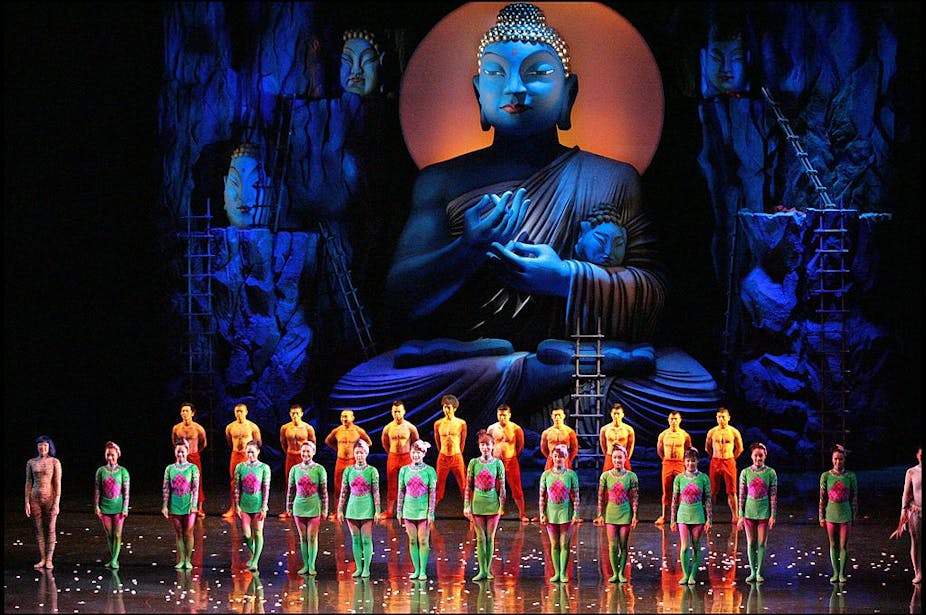
One summer afternoon in the late 1980s, my mother and I passed by a tea house on our trip out of town. The crowded building was usually a boisterous place filled with chatter, laughter, and the happy, clacking shuffle of mahjong tiles. At the moment we were passing, however, a great hush came over the teahouse: People were held spellbound by the black-and-white glow of a small TV in a corner, playing an episode of the series “Journey to the West.”
The TV series was adapted from a 16th century Chinese novel with the same title that has undergone numerous adaptations and has captured the imagination of Chinese people to this day. Like many kids in China, I was fascinated by the magic Monkey King, the beloved superhero in the novel, who went through amazing adventures with other pilgrims in their quest for Buddhist scriptures. While I had to quickly walk by the teahouse in order to catch our bus that day, this moment flashed back to me from time to time, making me wonder what made “Journey to the West” so fascinating for people of all ages and backgrounds.
After graduating from college, I embarked on the next chapter of my academic journey in the United States and reconnected with “Journey to the West” from a different perspective. Now, as a scholar with expertise in traditional Chinese literature , I am interested in the development of literary and cultural traditions around the story, including how it has been translated and reimagined by many artists .
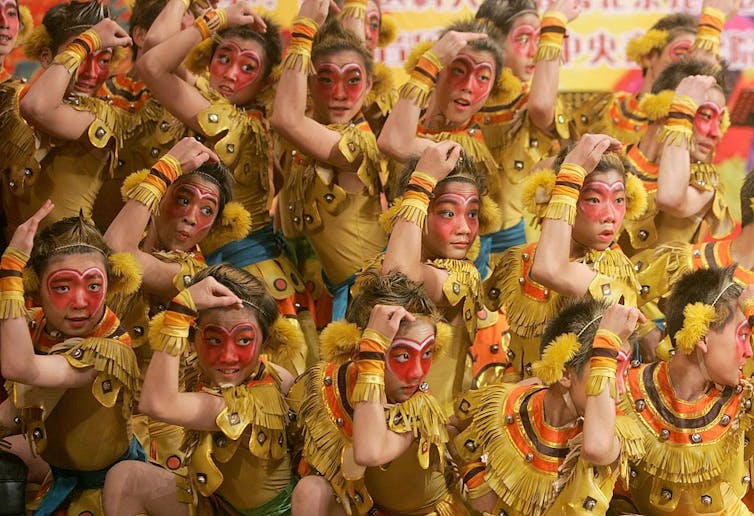
While deeply enmeshed in Chinese traditions, the story also resonates with readers from diverse cultures. “Journey to the West” creates shared ground by highlighting the quest for a common humanity, epitomized by its best-loved character, the Monkey King – a symbol of the human mind.
One journey, many stories
Scholars usually trace the beginning of this literary tradition to a Buddhist monk, Xuanzang , who set out on an epic pilgrimage to India in 627 C.E. He was determined to consult and bring back Sanskrit copies of Buddhist scriptures, rather than rely on previous Chinese translations. He did so after nearly 17 years and devoted the rest of his life to translating the scriptures.
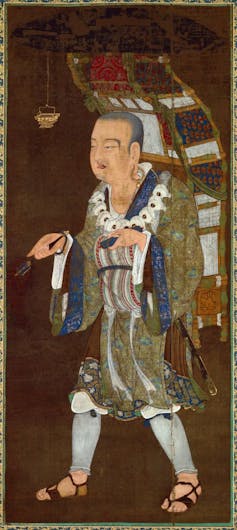
The journey has inspired a wide variety of representations in literature, art and religion, making a lasting impact on Chinese culture and society. Legends began to emerge during Xuanzang’s lifetime. Over centuries, they gradually evolved into a distinct tradition of storytelling, often focused on how Xuanzang overcame obstacles with the help of supernatural companions.
This culminated in a 16th century Chinese novel, “Journey to the West.” By this point, the hero of the story had already shifted from Xuanzang to one of his disciples: the Monkey King of Flower-Fruit Mountain, who serves as Xuanzang’s protector. The Monkey King possesses strong magical powers – transforming himself, cloning himself and even performing somersaults that fly him more than 30,000 miles at once.
Despite this novel’s dominance, the broader tradition around “Journey to the West” encompasses a wide variety of stories in diverse forms. The canonic novel itself grew out of this collective effort, and its authorship is still debated – even as it continues to inspire new adaptations.
The deeper journey
Central to all Journey to the West stories is a theme of pilgrimage, which immediately raises a question regarding the nature of the novel: What is the journey really about?
Centuries-long debates about the journey’s deeper message center on the 16th century novel. Traditional commentators in late imperial China adopted a variety of approaches to the novel and underscored its connections with different religious and philosophical doctrines: Confucianism, Daoism, Buddhism and syntheses of those teachings.
For example, all these teachings highlight the role of the “xin” – a Chinese word for mind and heart – in self-cultivation. While Confucian readers might see the plot of “Journey to the West” as the quest for a more moral life, Buddhists might decipher it as an inward journey toward enlightenment.
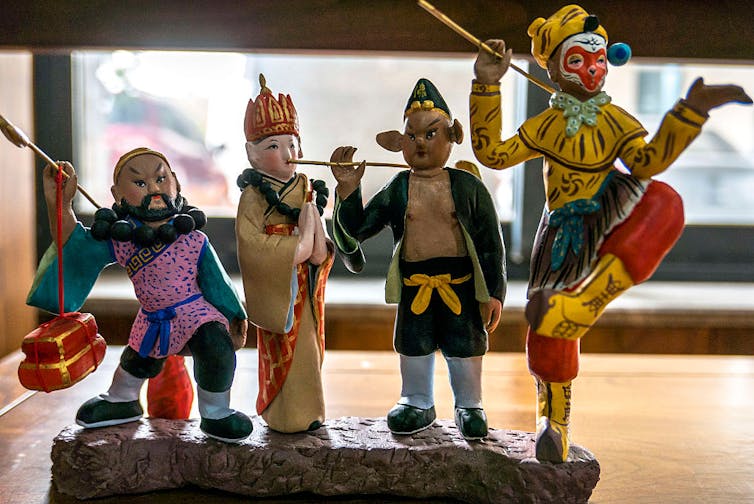
In the early 20th century, Chinese scholar and diplomat Hu Shi criticized traditional allegorical interpretations, which he feared would make the novel seem less approachable for the general public.
His opinion influenced Arthur Waley’s “Monkey ,” an abridged English translation of “Journey to the West” published in 1942, which has contributed to the canonization of the novel abroad . To a considerable extent, “Monkey” turns the pilgrims’ journey into Monkey’s own journey of self-improvement and personal growth.
Recent scholarship has further underlined religious and ritual connotations of the novel from different perspectives, and debates over the issue continue. But few people would deny that one idea plays a crucial role: the Monkey King as a symbol of the mind.
Mind monkey
There has been a long tradition in Chinese culture that associates the image of a simian creature with the human mind. On the one hand, a monkey often symbolizes a restless mind, calling for discipline and cultivation. On the other hand, an active mind also opens up the opportunity to challenge the status quo and even transcend it, progressing to a higher state.
The Monkey King in the novel demonstrates this dual dimension of the mind . He vividly displays adaptability in exploring uncharted territories and adjusting to changing circumstances – and learning to rely on teamwork and self-discipline, not merely his magic powers.
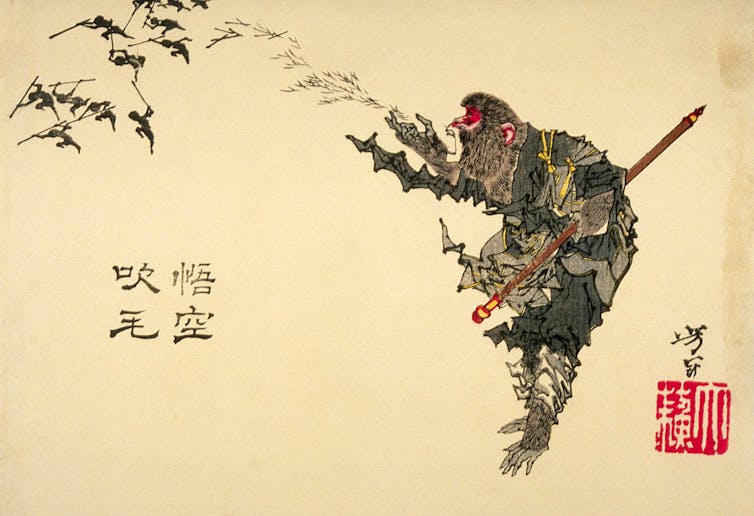
Before being sent on the pilgrimage, the Monkey King’s quest for self-gratification wreaked havoc in heaven and led to his imprisonment by the Buddha. The goddess Guanyin agreed to give him a second chance on the condition that he join the other pilgrims and assist them. His journey is fraught with the tensions between self-discipline and self-reliance, as he learns how to channel his physical and mental powers for good.
The Monkey King’s human qualities, from arrogance to fear, endow him with universal appeal. Readers gradually witness his self-improvement, revealing a common human quest. They may frown upon how the Monkey King is entrapped within his own ego, yet respect his courage in challenging authority and battling adversity. While his mischievous tricks give a good laugh, his loyalty to the monk Xuanzang and his sense of righteousness make a lasting impression.
Reviewing Waley’s “Monkey” in 1943 , Chinese-American writer Helena Kuo commented of the pilgrims: “Humanity would have missed a great deal if they have been exemplary characters.” Indeed, each one depicts humanity’s quest for a better self, particularly the main character. Monkeying around on the path of life, this simian companion captivates readers – and makes them consider their own journey.
- Confucianism
- Chinese culture
- Religion and society
- classic novels
- Ancient texts
- Ancient wisdom

Senior Lecturer - Earth System Science

Operations Coordinator

Sydney Horizon Educators (Identified)

Deputy Social Media Producer

Associate Professor, Occupational Therapy

Search form
You are here, journey to the west.
The novel is a fictionalised account of the mythologized legends around the Buddhist monk Xuanzang's pilgrimage to India (known as the Western Regions) during the Tang dynasty in order to obtain Buddhist religious texts called s?tras. The Bodhisattva Guan Yin, on instruction from the Buddha, the historical founder of Buddhism, gives this task to the monk and his three protectors in the form of disciples — namely Sun Wukong, Zhu Bajie and Sha Wujing — together with a dragon prince who acts as Xuanzang's steed, a white horse. These four characters have agreed to help Xuanzang as an atonement for past sins. Journey to the West has a strong background in Chinese folk religion, Chinese mythology and value systems; the pantheon of Taoist immortals and Buddhist bodhisattvas is still reflective of some Chinese folk religious beliefs today. Part of the novel's enduring popularity comes from the fact that it works on multiple levels: it is an adventure story, a dispenser of spiritual insight, and an extended allegory in which the group of pilgrims journeying toward India stands for the individual journeying toward enlightenment.
English translation: http://www.chine-informations.com/fichiers/jourwest.pdf
Traditional Chinese: http://open-lit.com/bookindex.php?gbid=14
Wikipedia page: http://en.wikipedia.org/wiki/Journey_to_the_West
Featured Articles

Happy Year of The Dragon! 祝您龙年快乐!
Happy Lunar New Year from the USC US-China Institute!

Passings, 2023
We note the passing of many prominent individuals who played some role in U.S.-China affairs, whether in politics, economics or in helping people in one place understand the other.

From Netflix to iQiyi: As the World Turns, Serial Dramas in Virtual Circulation
Ying Zhu looks at new developments for Chinese and global streaming services.

The War for Chinese Talent in the United States
David Zweig examines China's talent recruitment efforts, particularly towards those scientists and engineers who left China for further study. U.S. universities, labs and companies have long brought in talent from China. Are such people still welcome?

Journey to the West: Introduction
by That's Mandarin | Oct 11, 2022 | Guest Blogs & Media
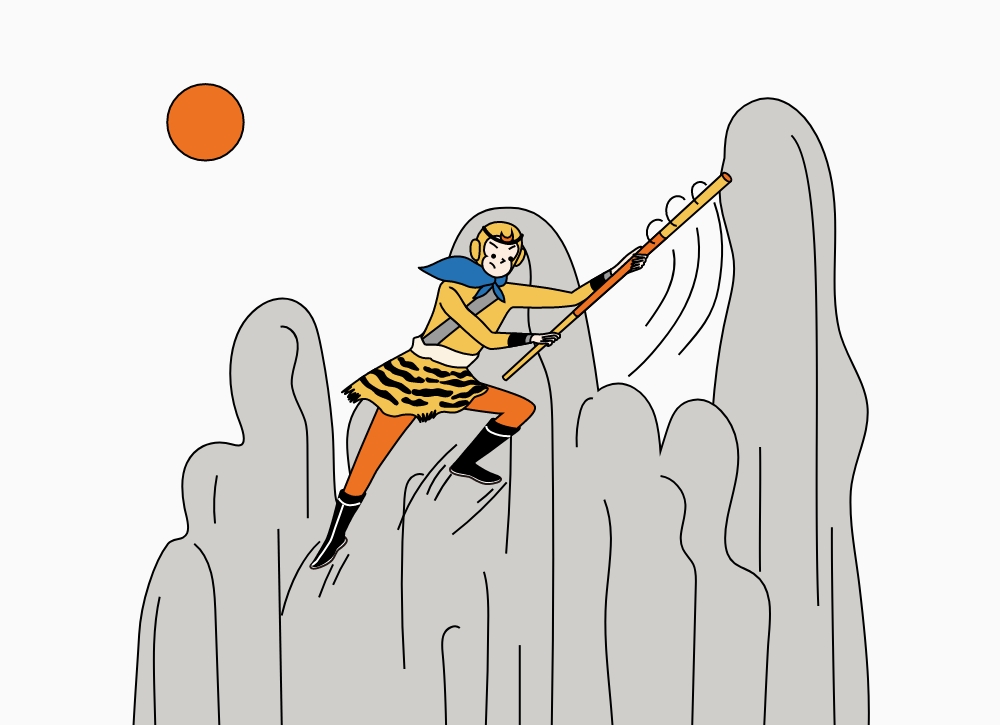
To spark your interest, our guest author Jeff Pepper from Imagin8 Press has shared a brief introduction of the book.
TIP: Scroll the the bottom of the article to discover links to a version of the book written for English-speaking students of Chinese!
Q: What is Journey to the West about?
Journey to the West (西游记, Xīyóu Jì), is a Chinese novel written in the 16th century by Wu Cheng’en (吴承恩, Wú Chéng’ēn).
It is probably the most famous and best-loved novel in China and is considered one of the four great classical novels of Chinese literature. Its place in Chinese literature is roughly comparable to Homer’s epic poem The Odyssey in Western literature. Wikipedia sums up the book’s role perfectly, saying, “Enduringly popular, the tale is at once a comic adventure story, a humorous satire of Chinese bureaucracy, a spring of spiritual insight, and an extended allegory in which the group of pilgrims journeys towards enlightenment by the power and virtue of cooperation.”
Q: Is Journey to the West based on a real story?
The novel’s storyline is loosely based on an actual journey by a Buddhist monk also called Xuanzang who traveled from the city of Chang’an (today’s Xi’an) westward to India in 629 A.D. and returned 17 years later with priceless knowledge and texts of Buddhism.

Q: In short, what is Journey to the West about?
A long time ago, in a magical version of ancient China, the great Tang Empire is ruled by an emperor named Taizong. Due to a mixup involving the wrongful execution of a dragon king, Taizong falls ill, dies, and is dragged down to the underworld. There he comes face to face with the Ten Kings of the Underworld, survives a harrowing journey through hell, and finally escapes with the help of a deceased courtier.
When Taizong returns to the human world he is a changed man. He decides to send a monk to the Western Heaven (that is, India), to visit the Buddha, obtain holy scriptures, and bring them back to the people of the Tang Empire. This task is nearly impossible, requiring the crossing of thousands of miles of wild and dangerous territory. With guidance from the bodhisattva Guanyin, the emperor selects a young monk named Xuanzang.
Xuanzang is a brilliant young man but has a complicated history. In an earlier lifetime centuries before, he was a student of the Buddha but was careless in his studies. Expelled from the Buddha’s temple, he spent the next ten lifetimes meditating and acquiring merit. As an infant in his current lifetime he is nearly killed by bandits, placed in a floating basket by his widowed mother and sent downriver, rescued by a monk, and raised in a monastery. At age eighteen he learns his true history, and goes off to avenge his father’s death.
Later he is chosen by Taizong to undertake the epic journey to the west. Now called Tangseng (“monk from Tang”), he faces a near-impossible task: he must cross hundreds of mountains and thousands of rivers, and survive encounters with a horrifying series of bandits, monsters, demons, ghosts, evil kings, scheming monks, false Buddhas, and much more.
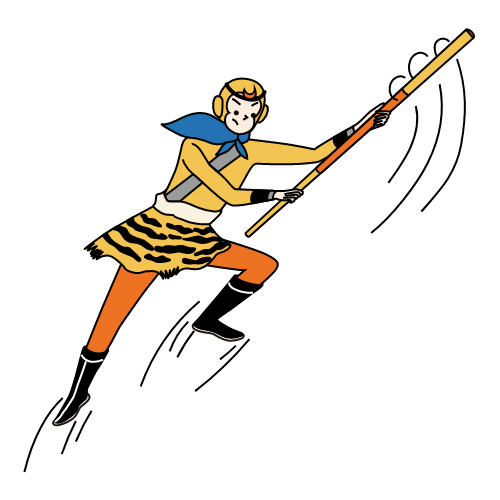
Q: How about the Monkey King and other famous characters?
Tangseng could never survive the journey on his own. Fortunately he acquires three powerful but deeply flawed disciples.
First is the monkey king Sun Wukong (孙悟空, S ūn W ù kōng , his name means “ape awakened to the void”), who he frees from a 500-year imprisonment under a mountain in punishment for creating havoc in heaven.
Second is Zhu Bajie (猪八戒, Zhū Bājiè, “pig of the eight prohibitions”), a gluttonous pig-man who is constantly fighting, and often succumbing to, his desires for food, sex and comfort.
And third is Sha Wujing (沙悟净, Shā Wùjìng, “sand seeking purity”), a reformed man-eating river demon.
All three have been converted to Buddhism by the monk, but they often slip back into their bad habits and cause Tangseng a great deal of trouble. Fortunately they all have great magical powers which come in handy for battling demons and monsters, and saving Tangseng from all sorts of trouble.
The story of this journey is described in this epic novel.

Q: How long is the original book?
The original Journey to the West is a very long book. It contains 100 chapters and is 588,000 Chinese characters long. It uses a very large vocabulary of 4,500 different words, over 90% of which are not included in HSK Levels 1-6, making it quite difficult for most non-native Chinese speakers to read.
The novel is also available in English translation, the best one being by the scholar Dr. Anthony Yu. His version fills four volumes and runs over 2,300 pages.
Q: Is the book suitable for Chinese beginners?
Fortunately for people learning to read Chinese, there is now another way to read this book. My writing partner Xiao Hui Wang and I have spent the last five years writing a series of 31 books that retell the Journey to the West story in language that is accessible to anyone learning to read Chinese at the HSK 3 level. The stories in these books are told in a way that matches the original as closely as possible, but because they are graded readers they are much easier to read. The first book, Rise of the Monkey King, is relatively short and uses just 512 Chinese words. Each book adds more new words and slightly increases the length of the story and complexity of the writing, leading step by step to the longest and most challenging book, Book 31, The Final Trial. All told, the entire series uses about 2,200 different Chinese words excluding proper nouns.
Fortunately, the original novel is not written as a single continuous story, but is broken up into more or less standalone episodes, each one between one and four chapters in length. This makes it possible to read and enjoy any of the 31 graded readers without having to read the ones that came before it.
Each book is written in Simplified Chinese. The books include pinyin, English translation, and a glossary. Free audio versions of each book are available free of charge on YouTube.
Q: Where can I get these books?
A list of all 31 books in the series, along with short descriptions and links to the Amazon product pages and free YouTube audiobooks, can be found on the Imagin8 Press home page, www.imagin8press.com .

by Jeff Pepper
Jeff Pepper ([email protected]) is President and CEO of Imagin8 Press , and has written dozens of books about Chinese language and culture.
Over his thirty-five year career he has founded and led several successful computer software firms, including one that became a publicly traded company. He’s authored two software related books and has been awarded three U.S. patents.
Submit a Comment Cancel reply
Your email address will not be published. Required fields are marked *
Submit Comment
Other posts you might like
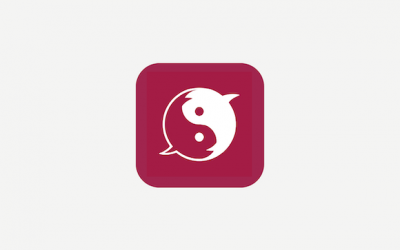
Dong Chinese | Great Tool to Learn Chinese
Sep 13, 2022 | Guest Blogs & Media
The Best Tool to Learn MandarinChinese learning has become extremely popular around the world. One of the reasons why so many people are willing to learn Chinese is that China’s rapid economic growth offers numerous job opportunities to people from different...

Business in Chinese and Chinese Culture
Aug 25, 2022 | Guest Blogs & Media
China is among the leading economic giants in the world. Moreover, the economic, political and social stability coupled with favorable government policies and numerous growth opportunities make it an ideal market for international expansion. However, doing business in...

How Is Social Media Slang Changing the Formal Use of Chinese Language?
Aug 3, 2022 | Guest Blogs & Media
Internet culture has created new words that people sometimes use online. This is the case both for the English-language side of the World Wide Web and for any other corner of it – including the Chinese Internet. Users have been creating new slang words that are...
Get 2-week FREE Chinese Classes
Original Price: ¥ 600

Subscribe to our newsletter

The Hit New Film Pushing Chinese Sci-Fi Into Unexplored Territory
In Kong Dashan’s hit new movie “Journey to the West,” the aliens aren’t hiding in the corn fields of the U.S. Midwest. They’re lurking in the villages of northern China.
The film has become a sensation on the festival circuit in recent months by offering audiences something rarely seen before: a science fiction tale with a distinctly local flavor.
Tang Zhijun, a middle-aged magazine editor from Beijing, travels to a remote village to investigate the mass sighting of an unidentified flying object. There, he meets a local poet who says the answer to the mystery lies at a distant mountain.
As the tension mounts, the pair embark on a road trip that turns into a journey of self-discovery. It’s a quirky, often comic narrative that echoes the original “Journey to the West,” the classic Chinese novel about the monk Tang Sanzang’s quest to retrieve the Buddhist scriptures from India.
Last October, the film scooped an unprecedented four awards — including best film — at the Pingyao International Film Festival, China’s leading platform for independent cinema. It has since played overseas at the International Film Festival Rotterdam and the Osaka Asian Film Festival to more acclaim.
With a Chinese theatrical release pending, film industry insiders say the buzz building around the feature is palpable. Kong, the film’s 32-year-old director, says the movie’s low-budget, down-to-earth style has proved to be an asset.
“We have given people science fiction within a story that might feel familiar to aspects of their own lives,” says Kong. “That is something new.”
Leading figures in China’s science fiction scene have hailed “Journey to the West” as a step forward for the industry — and a sign it’s finally ready to step out of the shadow of star author Liu Cixin.
Chinese sci-fi has skyrocketed in popularity in recent years, propelled by the breakout success of Liu’s “The Three-Body Problem.” The novel, which transcends time and space as it charts humanity’s war against an alien civilization, became a global sensation after winning the prestigious Hugo Award in 2015.
The Chinese government, once wary of sci-fi movies, began to actively embrace the genre as a soft power tool over the following years. This has opened the door for a string of big-budget science fiction productions, many of them drawing inspiration from Liu’s work.
In 2019, “The Wandering Earth” — an adaptation of a Liu novella about a group of astronauts trying to save the planet from destruction — became a box office smash, generating 4.4 billion yuan (then $638 million) in ticket sales and winning a slew of local awards.
Other Chinese sci-fi films to attract big audiences that year included the wacky comedy “Crazy Alien” — also based on a story by Liu — and the special effects-heavy alien invasion movie “Shanghai Fortress.”
Though the pandemic has caused major disruptions to film production in China, a big-budget sequel to “The Wandering Earth” is set for release in 2023. Streaming giants Tencent and Netflix, meanwhile, are currently putting the finishing touches on a TV adaptation of “The Three-Body Problem.”
Liu continues to loom large over China’s sci-fi scene. His style of fiction — speculative, epic in scale, and informed by hard science — has influenced an entire generation of Chinese writers.
“Currently, I see a lot of physics, astronomy, and space — natural science stuff,” says Chen Qiufan, a leading sci-fi author and honorary president of the Chinese Science Fiction Writers’ Association. “It’s pretty much like America back in the ’50s. Like (Isaac) Asimov, Arthur C. Clarke, those ‘golden-age’ authors.”
But there are signs this is starting to change. Some creators are starting to experiment with a folksier style of sci-fi — one that draws more heavily on China’s cultural heritage and current affairs. For Chen, it’s part of a movement to explore “what are the Chinese characteristics of sci-fi.”
“Maybe in the future, there’ll be something different,” he says. “I might also do some exploration myself to connect with some ancient Chinese philosophy and mythology … so the work is using a different kind of language.”
Filmmaker Kong appears to be ahead of the game. “Journey to the West” turns on the travails of its relatable main character and his search for answers: not only about what might lie in the great beyond, but also about how his own life has panned out.
It’s a work that comes steeped in the traditional themes found in science fiction, such as the search for redemption and humanity’s fascination with the possibility of extra-terrestrial life. Kong says his inspiration came from the hours he spent poring over sci-fi magazines as a child growing up in 1990s Shandong, a province in eastern China.
“My generation all grew up reading science fiction magazines, books about unknown mysteries,” says Kong. “If we think carefully about what aliens represent, it’s actually another kind of system, totally different from human beings’ existence.”
As opposed to Liu Cixin, whose work is often compared to the “golden age” sci-fi authors of the 1940s and ’50s, Kong’s work shows faint echoes of more recent classics. The central character — played by veteran actor Yang Haoyu — is fixated with outer space while his real life on terra firma falls apart, much like the protagonist in Steven Spielberg’s 1977 masterpiece “Close Encounters of the Third Kind.” As in that film, too, there’s a journey of discovery that’s as personal as it is otherworldly.
But there are also sly nods to arguably the greatest road trip of all — the one taken by Tang Sanzang and his three disciples in the original “Journey to the West.” In Kong's feature, however, the characters’ quest for fulfillment is rooted in a firmly contemporary setting.
“In both that book and my film, you have characters looking for the ultimate answers in life,” says Kong. “I think this comes from the influence of ‘Journey to the West’ subconsciously. It’s a road trip, but inside it’s also his own mental journey. I think it’s necessary to have this kind of journey in science fiction.”
The hope is that more Chinese filmmakers find opportunities to experiment with science fiction over the next few years. Chen, the author, says the outlook for Chinese sci-fi has never looked better, especially given the government’s embrace of the genre.
“There have been themes of science fiction in China for about 100 years, but they’ve not been continuously developed because of wars or due to political reasons,” says Chen. “But (now) seems to be a golden age because it’s top-down. We have got a lot of support from the government and, also, the market is ready.”
Chinese authorities are pouring resources into science -fiction-related projects. Next year, the southwestern city of Chengdu will host the influential World Science Fiction Convention. Officials have greenlit a massive $8 billion Paramount Park theme park in Kunming, another city in southwest China, which will include a zone themed around the “Star Trek” franchise.
In 2019, the government also helped launch the Chinese Science Fiction Academy at Chengdu’s Sichuan University, a facility whose stated mission is to develop “a sci-fi theoretical system with Chinese characteristics.” Last year, researchers estimated that China’s sci-fi industry was worth a massive 36.3 billion yuan in the first half of 2021.
The scene is also benefitting from the growing demand for sci-fi movies among young Chinese, Chen says. Unlike previous generations, who often didn’t have easy access to science fiction, Chinese millennials like Kong grew up immersed in sci-fi culture.
“So many in the younger generation are so passionate about sci-fi as a genre, no matter if it’s literature, movies, or video games,” says Chen. “I think that’s been a fundamental change, because in the ’80s, or even in the ’50s and ’60s, maybe people weren’t ready yet for science fiction.”
Editor: Dominic Morgan.
(Header image: A still from the film “Journey to the West.” From Douban)

- Terms Of Use
- Privacy Policy


- Death cases
- Detention and imprisonment
- Latest Events
- Truth clarification
- Fa-conferences
- Celestial Band
- Media reports
- Worldwide activities
- European Parliament
- United Nation
- Politicians
- Practitioners’ Forum
- Ancient stories
- Historical figures
- Graphic designs
Traditional Chinese Culture: The Story Behind the ‘Journey to the West’

You are welcome to print and circulate all articles published on Clearharmony and their content, but please quote the source.
Related Articles
- Stories from Ancient China: Pangu Creates The World
- Stories Behind Chinese Idioms: ‘Screened by the Peacock Screen’
- Stories from Ancient China: With Ethics Foremost, No Grudges Remain
- Stories from Ancient China: Nu Wa, Creator of Humans
- Stories from Ancient China: Fu Xi and the Origin of Chinese Civilization
- The Plum Blossom: A Symbol of Strength
New Jingwen
- To the Dafa Disciples Attending the Conference in Taiwan 2023-12-09
- How You Should Regard and Act Toward Master’s Family Members 2023-09-13
Persecution in China
News from europe, worldwide news, voice of support, traditional chinese culture.
- falundafa.org
- faluninfo.net
- minghui.org
- pureinsight.org
- upholdjustice.org
- China Daily PDF
- China Daily E-paper
- From the Press
- Opinion Line
- From the Readers
- Bureau Chief
- Forum Trends
Journey to the West inspires theories
Yang's adaptation of the historical fantasy was probably the most viewed TV series in China. But its success should also be credited to the appeal of the Chinese classic itself. Like the Odyssey, Journey to the West is a hero's quest, which teaches us about life in a way that is accessible and entertaining. We have not got enough mileage out of the novel considering its cultural heritage. May be one day someone will write a story based on the plot of Journey to the West.
Just like European psychologists found inspiration from stories of Oedipus and Hamlet, Chinese scholars can still Journey to the West as a prototype for various social studies, including the study of group dynamics and personality types.
As a familiar story for the average Chinese, Journey to the West can still inspire theories through some of its plots, structures and characters. For instance, consider the fight between the real Monkey King and the fake one. Isn't it a brilliant dramatization of our dilemmas? Think of the Monkey King's attempted escape from a palm of the Buddha. That should make us ponder about the difference in the power of ordinary people and the authorities, and the omnipresence we associate with higher beings. And the monsters that create troubles during the pilgrimage represent the various human struggles we face.
Yang's series may seem primitive judging by today's standards of TV productions, which rely heavily on celebrities, special effects and marketing gimmicks. I do not deny the benefits of technological progress, but I admire Yang for pursuing artistic excellence against all logistical odds. The actors she selected had real talent and were capable of real feats. Among them, Liu Xiao Ling Tong (who played the role of the Monkey King) had undergone years of martial arts training in the Peking Opera tradition. Those were the times of the "real deal".
The story behind the drama was much like the struggles that Tang Sanzan and his disciples go through in their pilgrimage. In the 1980s, China was transitioning into a market economy, so while the episodes were being made, some actors, lured by more lucrative work, left the series.
We learn from Yang's memoir that she did not always have the support she needed from her danwei (organization). But she persisted. Over six years she produced a series that transformed all the actors and actresses into instant celebrities. Yang deserves our respect for her devotion to her art. Often, this kind of recognition comes posthumously. Few people knew Yang while she was alive. Upon her death, the public has suddenly discovered her. This does not feel right.
Yang's 1986 adaptation focused more on telling the story and showcasing the characters, instead of giving us a lot of eye candies. Looking at all the characters, we think about choices we make in life, and people we have to deal with in our journeys. That is the kind of connection an artist can create. The novel, as well as the TV adaptation, shows us the weaknesses we all may have, including our caprice, sloth and disobedience, as well as our strengths such as our devotion, playfulness, fraternity and focus on a mission. We like the story because it taps into humanity. It is about us.
The classic is a unique Chinese story with the potential of ever-expanding reach. If the story of Mulan can appeal to people across the world, Journey to the West, with all its fantasies, should be ten times more interesting. As the world gets to know China better, hopefully Journey to the West will start its own journey to the West.
The author is an instructional designer, literary translator and columnist writing on cross-cultural issues.
- China Post issues new stamps on 'Journey to the West'
- Skymoons sets out on journey to the West
- Cast promotes ‘Journey to the West’ sequel in Chongqing
- Journey to the West director dies at 88
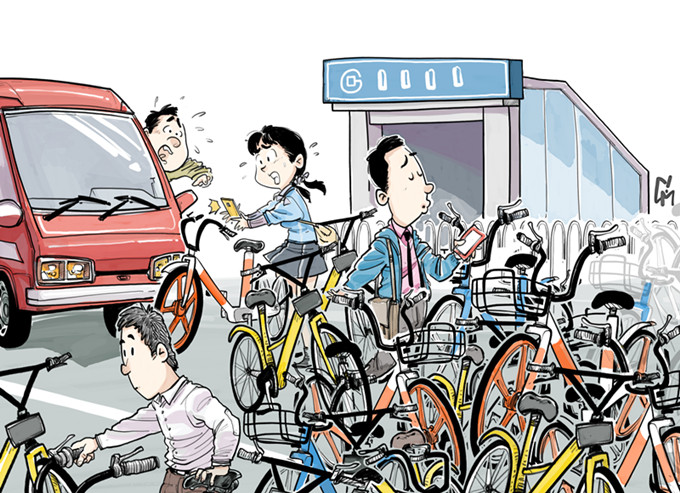

- Student Ambassadors
- Important Information
- Personal Anecdotes
Journey to the West
Every civilization has had its share of literary masters, and China is no exception to this. Throughout its history, education has always been an important part of China’s culture. As a result, China has had many educated scholars who have created amazing works of literature. Although the Chinese created many influential literary works, some were more influential than others. Journey to the West was one of the most influential works of Chinese literature, for it was known to many who were far beyond the reach of Chinese borders.
Journey to the West was a 16th century classic novel written anonymously by Wu Cheng’en, a poet who lived during the reign of the Ming dynasty. The novel discusses the voyage of Buddhist monk Xuanzang from Chang’an (modern day Xi’an) to India during the Tang dynasty in an effort to find holy Buddhist texts. Along the way, he visits several Western provinces in China. When he finally reaches India, he resides there for 13 years before he returns to China with the Buddhist texts.
The novel is made up of 100 chapters, which are divided into 3 primary sections. The first seven chapters describes a monkey who was born from a stone egg and acquires magical powers. Five chapters are related to the story of Xuanzuang’s desire to make a pilgrimage to Mahayan Amitabha Buddha’s Western Pure Land. The majority of the novel discusses the 81 adventures experienced by Xuanzang and his three animal-spirit disciples’ on their voyage to India. His three disciples are a magical monkey, a lazy pig, and a fish named Sandy. These three disciples were attached to Xuanzang because they had hoped to receive pardon from sins they had committed in their past lives’ by helping him.
The novel is primarily focused on Buddhism, but it also incorporates many Chinese folk tales, pantheism, and Taoism in order to help aid in the establishment of various characters and creatures who were dispersed throughout the novel. Wu Cheng’en incorporates both demonic spirits and animal spirits who took on a human form in the novel. This novel is considered to be the most famous novels in the Shenmo genre, which focuses on describing the calculating nature of gods or demons. The novel had the most profound influence on Chinese culture during the era of the Ming dynasty because it was the first book which included various folktales and myths from prior centuries. Nevertheless, the classic novel is extremely popular in China, where several different versions of the novel are being circulated today.
https://www.britannica.com/topic/Journey-to-the-West
https://www.chinahighlights.com/travelguide/culture/china-classic-novels.htm
https://www.vbtutor.net/Xiyouji/pzhubajie.htm
The Four Classic Novels of Chinese Literature
Somehow, ‘Journey to the West’ is China’s Latest Sci-fi Sensation
Kong dashan’s genre-mixing mockumentary ‘journey to the west’ is having a limited release in multiple european countries and new york city in april and may.

With a massive box office take of 598 million USD, The Wandering Earth 2 may be the Chinese sci-fi flick of the year, but one young director’s low-budget debut feature is quickly stealing its thunder.
Released in Chinese cinemas on April Fool’s Day, director Kong Dashan’s Journey to the West ( 宇宙探索编辑部 , Yuzhou Tansuo Bianjibu ) has only grossed 6 million USD so far.
However, the film has earned its place among the highest-rated Chinese sci-fi movies of all time: It received an impressive score of 8.4 out of 10 on Douban, a Chinese review platform often compared to IMDb.
The film is a deeply engaging story that follows a group of alien-seeking misfits who set out to investigate reports of a supernatural incident, only to unravel something beyond their imagination.
The film’s English title is derived from the 16th-century Ming Dynasty novel of the same name , which tells the adventure of a Buddhist monk and his disciples who traveled from China to India to retrieve sacred scriptures.
Although the film draws inspiration from this adventurous tale, Kong reimagines the story with a journey to Southwest China’s Sichuan province instead of to India. Additionally, the movie unfolds in five chapters instead of 100.

When Journey to the West had its world premiere at the Pingyao International Film Festival in October 2021, it proved to be a resounding success. Recognized as a standout film by jury members, critics, and audiences alike, it took home an unprecedented four awards , including the Fei Mu Award for best film.
The film then went on to tour the international film festival circuit throughout 2022, screening and winning awards at the prestigious International Film Festival Rotterdam , Jeonju International Film Festival , and many others.
View this post on Instagram A post shared by CMC Pictures 华人影业 (@cmc_pictures)
Editor’s Note: Spoilers ahead; you’ve been warned!
The movie starts with a VHS recording of a 1990s TV interview in which Tang Zhijun (played by Yang Haoyu), an editor of Space Exploration magazine, speaks firmly and romantically about his belief in the existence of extraterrestrial life. The editor has a grand vision that the discovery of aliens would set off the next great human evolution — one that would see all of humanity set aside their kerfuffles and band together.

Fast forward to 30 years later, however, and we see Tang making a living by giving lectures at a psychiatric hospital. His family has tragically fallen apart, and the magazine is on the brink of bankruptcy, operating from a messy Beijing office whose radiators haven’t seen any warmth for a while.

However, Tang’s optimism has remained intact, albeit more in the form of an obsession. When a collective sighting of a glowing alien is reported in a Sichuan village, he convinces his skeptical deputy Qin Cairong (played by Ai Liya) and alcoholic weatherman Narisu (played by Jiang Qiming) to join him on –— you guessed it — a journey to the west.
Two locals later join the ranks of the alien civilization seekers: Xiaoxiao (played by Sheng Chenchen), an insomniac fangirl of Tang, and Sun Yitong (played by Wang Yitong), an eccentric poet who claims to have received a mission from the aliens.
The motley crew of five characters can be seen as a reference to the classic novel: the matching surnames with the monk Tang Sanzang and his protégé Sun Wukong , and a pot that Sun wears on his head that reminds one of the Monkey King’s iconic headband.

Kong’s film is an eclectic mix of genres that seamlessly weaves together elements of sci-fi, mystery, comedy, and road movie into a cohesive narrative. The film’s faux-documentary style is characterized by talking head interviews, direct addresses to the camera, and a plethora of visual gags.
The unique sense of humor in Journey to the West owes much to its actors. Impeccable in his deadpan humor and comedic timing, veteran actor Yang, who also performed in The Wandering Earth and Cathy Yan’s Sundance-premiering Dead Pigs , offers his career-best performance as the single-minded pseudoscientist.
Matching his brilliance is Inner Mongolian actress Ai Liya, who delivers an outstanding performance as a cynical and down-to-earth partner in the film. Ai’s exceptional acting talent was also recognized at the 2020 Asian Film Critics Association Awards, where she won the Best Supporting Actress award for her role in Wang Xiaoshuai’s So Long, My Son .

But it’s not all just for laughs. What starts as quirky fun eventually takes on a poetic, existential tone as audiences discover that there’s a method to Tang’s madness, and that his journey of discovering the other is also that of finding the self. As with any absurdist comedy, there’s a tragedy at the core of Journey to the West : humanity’s existential crisis.
One Douban user summarized the film as “an absurd masterpiece of romanticism, a wonderful ode to idealism, the peak of Chinese soft sci-fi, and the highlight of domestic pseudo-documentary.”
Another impressive highlight of the film is its young and talented crew behind the camera. While the film is Kong’s feature debut, he has prior experience from his graduate program at the Beijing Film Academy making a mockumentary short that has gained a near cult following among Chinese arthouse cinephiles.
Kong co-wrote the idiosyncratic story of Journey to the West with Wang Yitong, who plays the poet Sun in the film. And the handheld, shaky-cam style was executed seamlessly by Belgian cinematographer Matthias Delvaux, who also lensed Tibetan auteur Pema Tseden’s upcoming Snow Leopard .
Last but not least, Hu Shuzhen, who worked on the 2021 Locarno-nominated Virgin Blue , deliberately edited the footage into an abundance of jump cuts. The resulting choppy quality feels true to the spirit of mockumentaries; however, as many watchers will warn you, you might not want to sit too close to the screen.

With Journey to the West , Kong provides China with a much-needed dose of soft sci-fi, especially given the overabundance of recent and upcoming adaptations of Liu Cixin’s hard sci-fi literary works.
This significance wasn’t lost on domestic audiences. A short review with more than 2,500 likes on Douban reads , “Chinese sci-fi has finally found another path.”
But Journey to the West also demonstrates that the two directions of Chinese sci-fi filmmaking don’t necessarily stand in opposition; Kong himself was even an assistant director on The Wandering Earth 2 .
Meanwhile, Frant Gwo , the director of The Wandering Earth franchise, is one of the executive producers of Kong’s film. He even has an amusing cameo role, playing himself as he looks to buy a cheap spacesuit for his own movie, The Wandering Ball , a nod to his real-life film.

While it’s presently unclear whether Kong will work on The Wandering Earth 3 , which won’t come out till 2027, he’s reportedly preparing an adaptation of Liu Cixin’s short story, The Micro-Age , or The Micro-Era .
The last news about the prospective film was released when the project was submitted for approval in 2019. After Kong’s success with Journey to the West , however, audiences have already started getting hyped for his future projects.
The film is having a limited release in multiple European countries and New York City throughout April and May. CineCina presented its North American premiere on April 22. The film may also hit other cities in Australia and New Zealand at a later date.
Cover image via Weibo
- #Film & TV
- #science fiction
- #movie theater
- #Journey to the West
- #box office
#Chinese sci-fi
- #Film Festivals

#The Wandering Earth
On February 5, the renowned sci-fi author spoke with Chinese state media and reflected on the bugs, special effects, and innovations of ‘The Wandering Earth 2’ Read More

#Chinese cinema
‘The Wandering Earth 2’ is also based on the writings of celebrated Chinese sci-fi writer Liu Cixin and will hit theaters on January 22, 2023 Read More

Released on Netflix on December 2, the sci-fi blockbuster ‘Warriors of Future’ recently became the highest-grossing Chinese-language film of all time in Hong Kong Read More

The film about a Japanese high school basketball team is a hit with Chinese audiences, who have fond childhood memories of the original anime and manga Read More

Chinese New Year has become a time for huge domestic box office receipts. This year, ‘Full River Red’ and ‘The Wandering Earth 2’ are the hottest releases Read More
Journey to the West - Chapter 13 Part 1 Journey to the West - An Audio Drama Series
Xuan Zang left Chang An and very quickly fell into a hole, literally. Bringing China's most influential fantasy adventure to your ears, with an original translation right from its source text. The Fifth Monkey is an independent, multinational team dedicated to this project. Become a subscriber to access the latest episode: https://podcasters.spotify.com/pod/show/thefifthmonkey/subscribe For subtitles, please visit our Youtube Channel. Shop at our Patreon store for transcripts and become a paid member for more exclusive content. We are also on Ko-fi, X, Bilibili, Tumblr & Weibo.
- Episode Website
- More Episodes
- The Fifth Monkey
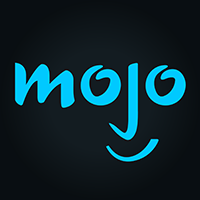
Tough Rides: China, Episode 3: China's Wild West
Posted: January 22, 2024 | Last updated: March 17, 2024
MojoTravels is proud to present: Tough Rides. In 2010, when Canadian brothers Colin Pyle and Ryan Pyle set out from Shanghai on a motorcycle journey that had never previously been attempted, they thought they had some idea of what lay ahead of them. It was a misconception that became evident by the end of Day 1. But, despite the many challenges they faced, 65 days and 12,000 miles later they'd succeeded in circumnavigating China. In this third episode from Ryan Pyle Productions, Ryan and Colin Pyle leave their moon-scape camping ground at Turpan and head across the salt flats to Xinjiang, China's Wild West. In a few hours they travel from 150m below sea level to 3300m above sea level in freezing temperatures.
More for You
The films everyone should see at least once before they die, according to critics
Trump on Johnson’s handling of Ukraine vote: ‘You can’t really get too tough’ with slim majority
Ncuti Gatwa Says While "White Mediocrity" Gets Celebrated, Black People Must Be "Flawless" to Get Half That
Putin Sets Stage For Upheaval In Another Country
Why You Should Be Putting Aluminum Foil Behind Your Router
Dolphins' Tyreek Hill recalls Mike McDaniel's tongue lashing: 'We pay you all this money for what?'
Here is the true value of having a fully paid-off home in America — especially when you're heading into retirement
Meet the richest women in the US
The Only Ingredients Bobby Flay Uses To Season His Burgers
Workers Stunned as California Minimum Wage Increase Results in Immediate Restaurant Closure
How to Hold a Pistol—the Right Way
Satanic Temple co-founder challenges Florida Gov DeSantis to debate on religious freedoms
How To Remove Weeds From The Cracks In Your Driveway To Prevent Their Return
20 extremely long movies that are extremely good
There's an Active E. Coli Outbreak Linked to Ground Beef Sold Nationwide—Here's What to Know
McDonald's menu adds some wild new 'secret' sandwiches
This Photo Allegedly Shows What a Beach in Palestine Looked Like Before Israel Was Founded. We Delved into Its History
Tesla’s Cybertruck dreams just crashed into reality
I’m a Real Estate Agent: Here Are the 4 Florida Cities Where You Should Avoid Buying a Home
101 short jokes for kids and adults that are actually hilarious

IMAGES
VIDEO
COMMENTS
Journey to the West (Chinese: Xiyou ji 西遊記) is a Chinese novel published in the 16th century during the Ming dynasty and attributed to Wu Cheng'en.It is regarded as one of the greatest Classic Chinese Novels, and has been described as arguably the most popular literary work in East Asia. Arthur Waley's 1942 abridged translation, Monkey, is known in English-speaking countries.
Journey to the West, foremost Chinese comic novel, written by Wu Cheng'en, a novelist and poet of the Ming dynasty (1368-1644). The novel is based on the actual 7th-century pilgrimage of the Buddhist monk Xuanzang (602-664) to India in search of sacred texts. The story itself was already a part of Chinese folk and literary tradition in the form of colloquial stories, a poetic novelette ...
NOTES. 1. Since a few selected chapters will suffice for the purpose of the course, we recommend using an English version of the full novel. This could be either W. J. F. Jenner's Journey to the West, 4 vols., reprint ed. (Beijing: Foreign Languages Press, 1984) or Anthony C. Yu's The Journey to the West, 4 vols., revised ed. (Chicago: University of Chicago Press, 2012).
Journey to the West, or Xiyouji (西游记), is a late Ming dynasty (1368-1644) novel of comedic fantasy based on the religious pilgrimage of a 7th-century Chinese Buddhist monk to India in search of religious scripts. Published in the late 16th century, with the earliest extant edition dating back to 1592, Journey to the West is a hundred-chapter novel attributed to the author Wu Cheng'an.
One of its main results is the fictional narrative of "Journey to the West," a Chinese novel published in the 16th century but based on much earlier Song dynasty era legends. The hero of the ...
Journey to the West is a fictionalized account of the legends surrounding the 16-year pilgrimage of the Buddhist monk Xuánzàng (602-664) to India during the Táng dynasty, to obtain Buddhist religious texts (sutras).Xuánzàng reached India after experiencing innumerable trials and hardships. He lived there for more than a decade, studying classics of Buddhism and Indian culture at Nalanda ...
China has the largest Buddhist population in the world, and the religion is tacitly supported by the Communist government. Sections. 7.1 Journey to the West - Getting Started. ... Unit 7 Journey to the West. The powerful and mischievous Stone Monkey King brings chaos to heaven and earth. Freed from a mountain prison in order to guard a ...
Four of the characters from 'Journey to the West,' made in the clay figurine technique of Huishan, China, including the Monkey King on the right. Zhang Peng/LightRocket via Getty Images
Journey to the West. Journey to the West is one of Chinese Literature's Four Classic Novels. It was published in the 1590s. The novel is a fictionalised account of the mythologized legends around the Buddhist monk Xuanzang's pilgrimage to India (known as the Western Regions) during the Tang dynasty in order to obtain Buddhist religious texts ...
Journey to the West (西游记, Xīyóu Jì), is a Chinese novel written in the 16th century by Wu Cheng'en (吴承恩, Wú Chéng'ēn). It is probably the most famous and best-loved novel in China and is considered one of the four great classical novels of Chinese literature. Its place in Chinese literature is roughly comparable to Homer ...
Journey to the West (Chinese: 西遊記; pinyin: Xī Yóu Jì) is a Chinese novel published in the 16th century during the Ming dynasty and attributed to Wu Cheng'en....
1 October 1986. ( 1986-10-01) Journey to the West is a Chinese television series adapted from the classic 16th-century novel of the same title. The first 11 episodes of the series were first broadcast on CCTV in China on 1 October 1986. The series became an instant classic in China and was praised for being one of the most original and faithful ...
Kong Dashan's award-winning feature "Journey to the West" is generating huge buzz in China — and showing there is more to Chinese sci-fi than Liu Cixin. In Kong Dashan's hit new movie "Journey to the West," the aliens aren't hiding in the corn fields of the U.S. Midwest. They're lurking in the villages of northern China.
Journey to the West is one of the Four Great Classical Novels of Chinese literature. It was published in the 16th century during the Ming dynasty and is attr...
Synopsis. Set during the Tang Dynasty in China, Journey to the West describes the adventures of a monk and his three disciples—a monkey, a pig, and an ogre—on their way to India to find and bring back sacred Buddhist scriptures. The monkey and the pig provide much of the humorous action in the novel. The third disciple, a river ogre named ...
Yang Jie, director of the TV series Journey to the West, passed away on April 15 at the age of 88 years, triggering nostalgia, especially among those born in the 1970s and 1980s. Yang's series was ...
Journey to the West was one of the most influential works of Chinese literature, for it was known to many who were far beyond the reach of Chinese borders. Journey to the West was a 16th century classic novel written anonymously by Wu Cheng'en, a poet who lived during the reign of the Ming dynasty. The novel discusses the voyage of Buddhist ...
Books. Journey to the West. Wu Cheng'en. Real Reads, 2011 - Juvenile Fiction - 64 pages. In ancient China a magical monkey appears, creating chaos everywhere he goes. The only way to put his tricks and talents to good use is to make him protector of Xuanzang, a young and handsome monk determined to travel from China to India in search of the ...
When Journey to the West had its world premiere at the Pingyao International Film Festival in October 2021, it proved to be a resounding success. Recognized as a standout film by jury members, critics, and audiences alike, it took home an unprecedented four awards, including the Fei Mu Award for best film.. The film then went on to tour the international film festival circuit throughout 2022 ...
Journey to the West (Chinese: 宇宙探索编辑部; pinyin: Yǔzhòu tànsuǒ biānjí bù; lit. 'Universe Exploration Editorial Department') is a 2021 Chinese film written and directed by Dashan Kong in his feature film debut. The English title is inspired by the 16th century Chinese literary classic of the same name.It had its world premiere at the 5th Pingyao International Film Festival in ...
️ Watch full episodes with English subs: https://bit.ly/30C4uGw🔔 Subscribe to our channel NOW 👉 https://bit.ly/C-Drama 👈【TV Series】 Journey to the West ...
Bringing China's most influential fantasy adventure to your ears, with an original translation right from its source text. The Fifth Monkey is an independent, multinational team dedicated to this project. Become a subs… Show Journey to the West - An Audio Drama Series, Ep Journey to the West - Chapter 13 Part 1 - Mar 1 ...
In this third episode from Ryan Pyle Productions, Ryan and Colin Pyle leave their moon-scape camping ground at Turpan and head across the salt flats to Xinjiang, China's Wild West. In a few hours ...
adaptations of Monkey and The Journey, and how they relate to different aspects of China. Learning about Traditional China through The Journey Written in the late Ming dynasty (1368-1644) and based on a true event during the Tang dynasty (618-907), The Journey of-fers the opportunity to introduce two of the "golden eras" in Chinese history.
In 2015, Lee launched his entertainment site, Hollywood Unlocked. In January 2023, he raised US$1.7 million in seed capital, bringing the company's valuation to US$50 million.
Traditional Chinese. 黑神話:悟空. Transcriptions. Standard Mandarin. Hanyu Pinyin. Hēishénhuà: Wùkōng. Black Myth: Wukong (黑神话:悟空) is an upcoming action role-playing game by Chinese developer Game Science, based on the classical 16th-century Chinese novel Journey to the West. [2] [3] It is set to release on August 20, 2024.
Catch the top stories of the day on ANC's 'Top Story' (18 April 2024)